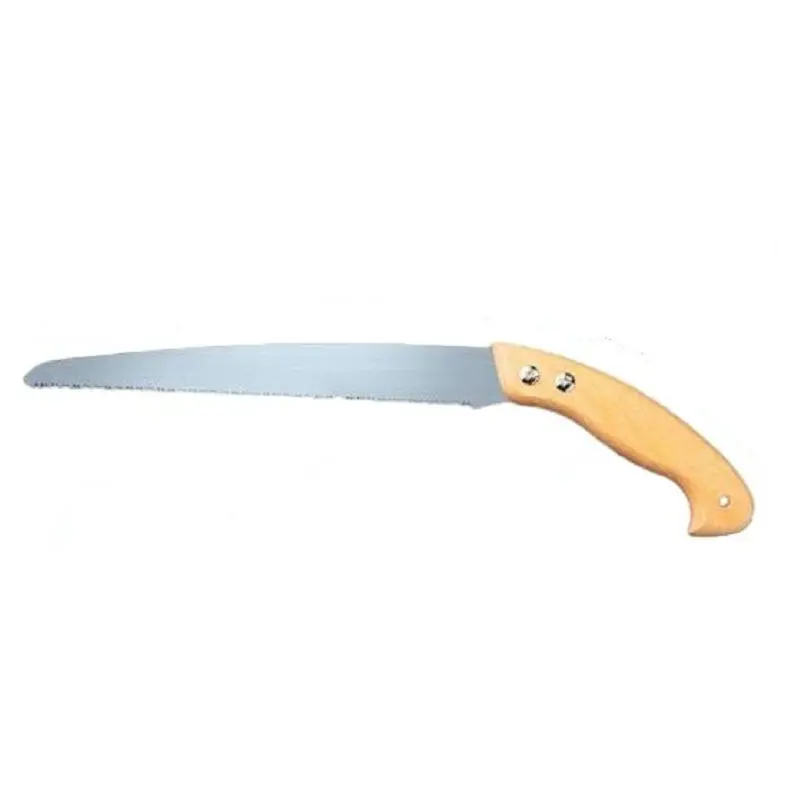A wooden-handled fruit tree saw is an essential tool designed specifically for pruning fruit trees. This article explores its functions, features, and the importance of proper maintenance for effective orchard management.
Functions of the Fruit Tree Saw
The primary function of a fruit tree saw is to efficiently cut off branches that may hinder the growth and yield of fruit trees. This includes:
• Removing Thick Old Branches: Ensuring the tree remains healthy by eliminating aged branches.
• Cutting Diseased Branches: Preventing the spread of diseases within the orchard.
• Trimming Excess Branches: Enhancing light and air circulation within the tree crown, promoting better fruit growth.
Design Features of the Saw
Saw Tooth Shape and Arrangement
The saw teeth are typically triangular and designed with a specific angle to facilitate easier cutting into branches. The staggered arrangement of the teeth prevents wood chips from clogging the blade, resulting in a smoother sawing experience.
• Tooth Density: The size and spacing of the teeth vary based on the saw's intended use. For pruning thicker branches, the teeth are larger and more spaced out, allowing for rapid wood removal.

Blade Material and Treatment
Fruit tree saw blades are usually crafted from high-quality steel and undergo special heat treatment processes to enhance their hardness and sharpness. This ensures:
• Efficient Cutting: The blade can quickly penetrate wood, reducing resistance and improving overall sawing efficiency.
Surface Treatment for Durability
To protect against rust and corrosion, saw blades are subjected to surface treatments. Common methods include:
• Electroplating: This creates a hard metallic coating (e.g., chrome or zinc plating) that not only prevents rust but also enhances the blade's appearance.
Spraying: Applying an anti-corrosion coating, such as rust-resistant paint, helps protect the blade's surface.
Assembly and Quality Control
During assembly, it is crucial to maintain strict dimensional and assembly accuracy. Key considerations include:
• Firm Connection: Ensuring a secure and vertical attachment between the saw blade and wooden handle.
• Accurate Positioning: Proper placement of the saw blade is essential to avoid affecting sawing quality and preventing potential damage or safety hazards.
Debugging and Inspection
After assembly, the fruit tree saw must undergo debugging and inspection to confirm its functionality. This process includes:
• Sharpness Check: Ensuring the blade is sufficiently sharp for effective cutting.
• Sawing Smoothness: Evaluating the ease of sawing.
• Comfort Assessment: Checking the ergonomic design of the wooden handle.
Inspection involves verifying the integrity of all components and checking for any blade deformation or damage. Only saws that pass these checks are deemed ready for use.
Conclusion
A wooden-handled fruit tree saw is a vital tool for effective orchard management. Understanding its features and proper maintenance can lead to improved tree health and fruit yield, making it an indispensable asset for any fruit grower.
Post time: 11-06-2024




